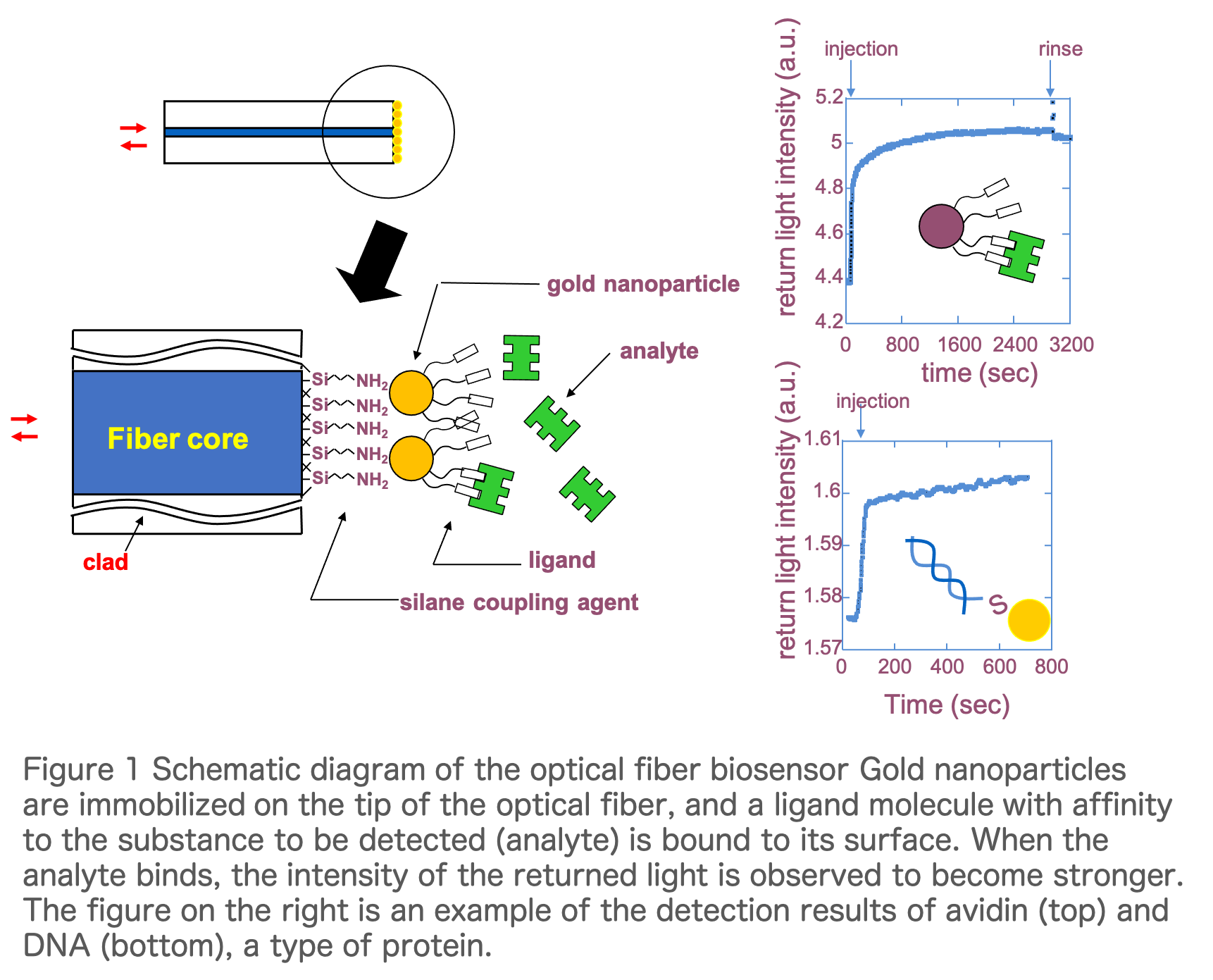Surface Plasmon Sensor
The resonance conditions for surface plasmons change when a substance is adsorbed onto gold particles or the gold surface or when the refractive index of the surroundings changes. Specifically, the color of the particles changes or the reflectance changes. This can be used to detect changes in refractive index and to detect DNA and proteins. This is called a surface plasmon sensor. Surface plasmon sensors are commercially available and widely used in biochemistry and genetic engineering research.
We have developed a surface plasmon sensor with gold nanoparticles immobilized on the tip of an optical fiber (Figure 1), and have confirmed that DNA and proteins can be detected with a very small sample volume of 50 nL (about 1/100 of a drop). In addition, the sensor can measure refractive index with high sensitivity (refractive index resolution of 0.0000001), enabling it to measure the temperature of a small sample and determine the concentration of substances contained in it.
This research uses spherical gold nanoparticles (about 40 nm in diameter). We are using electromagnetic field analysis to design the shape of the particles with high sensitivity. For electromagnetic field analysis, we use finite difference time domain (FDTD), finite element method (FEM), discrete dipole approximation (DDA), and analytical methods using multipole expansion. The reason for using various methods is that it is difficult to draw conclusions using only one method since the appropriate electromagnetic field analysis method depends on the geometry of the nanoparticles.

Return to Research

